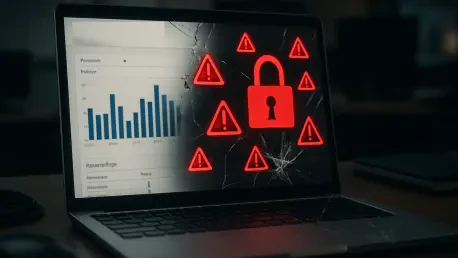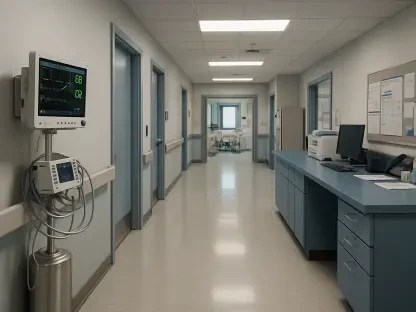In a startling revelation that underscores the persistent threat of cyberattacks in the healthcare sector, a significant data breach at Methodist Homes of Alabama & Northwest Florida has exposed sensitive information of over 25,000 individuals, highlighting the urgent need for stronger security measures. This incident, detected in late 2024, serves as a grim reminder of the vulnerabilities within digital systems that store critical personal and medical data. The breach not only compromised personally identifiable information (PII) but also protected health information (PHI), placing affected patients at substantial risk of identity theft and medical fraud. As cyber threats continue to evolve, this event highlights the urgent need for robust security measures in healthcare organizations to safeguard patient trust and privacy. The scale of this breach, affecting 25,579 patients, amplifies concerns about data security practices and the potential consequences for those whose information has been exposed. This article delves into the details of the incident, the response from the organization, and the broader implications for data protection in the healthcare industry.
1. Details of the Cyberattack and Data Exposure
The cyberattack on Methodist Homes of Alabama & Northwest Florida was first detected on October 14, 2024, after unusual activity was noticed within the organization’s computer network. A thorough investigation revealed that an unauthorized actor had accessed sensitive data over a period spanning from October 2 to October 14 of that year. The compromised information included a wide range of personal details such as names, Social Security numbers, dates of birth, driver’s license numbers, financial account details, and health insurance information. Additionally, medical data like diagnoses, treatment details, and medical record numbers were exposed. With 25,579 individuals affected across the United States, the breach poses severe risks, as such data can be exploited for fraudulent activities. The scope of the exposed information underscores the critical nature of this incident and the potential long-term impact on the privacy and security of those involved, raising questions about how such breaches can be prevented in an increasingly digital healthcare landscape.
Beyond the immediate exposure of data, the incident sheds light on the vulnerabilities that persist within healthcare IT systems. Hackers targeting these systems often seek to exploit weaknesses in security protocols, and the breach at Methodist Homes indicates that even established organizations are not immune to such threats. The types of data accessed—ranging from financial identifiers to detailed medical histories—create a perfect storm for identity theft and medical fraud, where criminals could impersonate patients or misuse their information for illicit gain. Notified individuals now face the daunting task of monitoring their personal and financial accounts for suspicious activity. This breach serves as a case study in the devastating consequences of inadequate cybersecurity and the urgent need for healthcare providers to prioritize the protection of sensitive patient information against increasingly sophisticated cyber threats that continue to challenge the industry’s defenses.
2. Organizational Response and Notifications
Upon discovering the breach, Methodist Homes of Alabama & Northwest Florida took immediate steps to secure their systems, including taking portions of their network offline to prevent further unauthorized access. The organization conducted a comprehensive investigation to assess the extent of the breach and began notifying affected individuals through mail starting earlier this year. Additionally, a public notice about the data security incident was posted on their official website to ensure transparency. The incident was reported to relevant authorities, including the U.S. Department of Health and Human Services, as well as state offices such as the Maine and New Hampshire Attorneys General, adhering to legal disclosure requirements. These actions reflect an effort to address the breach responsibly, though the scale of the incident raises questions about the initial security measures in place and whether more could have been done to prevent such a significant data exposure in the first place.
In an effort to mitigate the impact on affected individuals, Methodist Homes has offered complimentary credit monitoring and identity protection services through a third-party provider. This service aims to help those impacted by the breach detect and respond to potential misuse of their personal information. A dedicated assistance line has also been established, operating during standard business hours, to address questions and concerns from patients. While these measures provide some relief, they cannot fully undo the damage caused by the exposure of such sensitive data. The organization’s response highlights the importance of post-breach support, but it also serves as a reminder that proactive cybersecurity investments are essential to prevent such incidents. The steps taken after the breach demonstrate a commitment to accountability, yet the focus must now shift toward ensuring that future vulnerabilities are addressed with stronger preventive strategies and robust system protections.
3. Implications and Protective Measures for Patients
The fallout from this data breach extends far beyond the immediate exposure of personal information, as it places affected individuals at heightened risk of identity theft and medical fraud. Criminals can use the stolen data to open fraudulent accounts, apply for loans, or even seek medical services under someone else’s name, leading to financial loss and compromised healthcare records. Patients who have been notified of the breach are encouraged to remain vigilant by regularly checking their credit reports and financial statements for any unusual activity. Additionally, staying alert for phishing attempts—whether through emails or phone calls—that might exploit the exposed information is crucial. The potential long-term consequences of this breach emphasize the need for individuals to take proactive steps to protect their personal data, even as they rely on organizations to bolster their cybersecurity frameworks against future attacks.
For those seeking to safeguard their information, several actionable measures can help mitigate risks following such a breach. Enrolling in the credit monitoring services offered by Methodist Homes provides an initial layer of protection by alerting individuals to suspicious activity on their credit files. Beyond this, placing a fraud alert or credit freeze with major credit bureaus can prevent unauthorized access to personal credit information. Continuous monitoring of personal accounts and being cautious of unsolicited communications are also vital practices. This incident serves as a stark reminder of the importance of individual vigilance in the digital age, where personal data is increasingly at risk. While organizations must enhance their security protocols, patients also bear some responsibility for protecting themselves by staying informed and adopting best practices to minimize the impact of potential data exposures in an era of frequent cyberattacks.
4. Looking Ahead: Strengthening Data Security
Reflecting on the breach at Methodist Homes, it becomes evident that the healthcare sector faces a critical challenge in balancing digital transformation with data security. The incident exposed not only the vulnerabilities in existing systems but also the devastating effects on patient trust when such breaches occur. Looking back, the response efforts demonstrated a commitment to transparency and support for affected individuals, yet the scale of the breach underscored the need for more robust preventive measures. The healthcare industry must reckon with the reality that cyberattacks are becoming more sophisticated, demanding a reevaluation of how sensitive information is protected in an increasingly interconnected world where data breaches can have far-reaching consequences.
Moving forward, healthcare organizations must prioritize comprehensive cybersecurity strategies to prevent similar incidents. This includes investing in advanced threat detection systems, conducting regular security audits, and training staff to recognize potential risks. Collaboration with cybersecurity experts can further strengthen defenses against evolving threats. For patients, staying informed about data protection rights and utilizing available resources like credit monitoring services remains essential. As technology advances, the industry must adapt by implementing stricter regulations and fostering a culture of security awareness. The lessons learned from this breach should drive actionable change, ensuring that patient data is safeguarded with the highest priority in future endeavors to rebuild trust and prevent recurrence.









